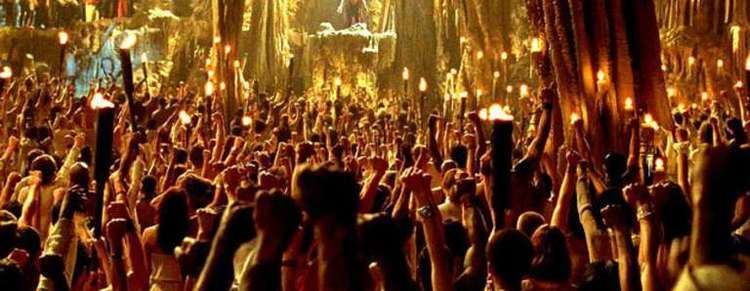Mudrarakshasa
6 /10 1 Votes
| ||||||||||||||||||||||||||||||||||
Mudrarakshasa promo sanskrit film
The Mudrarakshasa (The Signet of the Minister) is a historical play in Sanskrit by Vishakhadatta that narrates the ascent of the king Chandragupta Maurya (r. c. 324 – c. 297 BCE) to power in India. It is dated variously from the late 4th century to the 8th century.
Contents
- Mudrarakshasa promo sanskrit film
- Vishakadatta s mudrarakshasa 1 2 shatavadhani r ganesh kannada
- Plot
- Characters
- Commentary
- Adaptations
- Editions
- References

Vishakadatta s mudrarakshasa 1 2 shatavadhani r ganesh kannada
Plot

Chanakya and Chandragupta defeat the king Nanda, in an alliance with another king Parvateshvara (or Parvata).
Parvata and Chandragupta plan to divide up the old possessions of the Nanda Empire. Next, Parvata dies poisoned by a Visha Kanya and his son Malayaketu succeeds him. Malayaketu, together with Rakshasa, the last minister of Nanda, demands the inheritance of all the old territories of the Nanda. Rakshasa, has also vowed to avenge the murder of his master Nanda and kill Chandragupta for that crime. He plans an attack on his capital with the help of Malayaketu.
The challenge before Chanakya is to somehow bring Rakshasa to accept the office of the Prime minister of Chandragupta. He cannot do it by force for the fear of harming Rakshasa. No inducement can work either. So he employs the strategy of isolating Rakshasa from his allies. This he does by fabricating evidence to show that Rakshasa is willing to sacrifice Malayaketu and join Chandragupta's camp. Malayaketu falls for this deceit and debunks Rakshasa. The second part of Chanakya's strategy is to force Rakshasa to surrender and accept Chandragupta's ministership. This he achieves by announcing death penalty for Chandanadasa, an old friend of Rakshasa. Circumstances bring Rakshasa to the city of Pataliputra where his friend is about to be put to the gallows. Rakshasa obtains his release by surrendering himself and agreeing to become the Prime minister to Chandragupta.
The title of the play is explained as 'the play in which Rakshasa is caught with the help of a ring.' Rakshasa's official signet ring plays a very significant role in Chanakya's overall strategy to discredit Rakshasa in Malayaketu's eyes. A chance discovery of Rakshsa's official ring by Chanakya's spy helps Chanakya to prepare and authenticate a fake letter purportedly addressed by Rakshasa to Chandragupta. His seal then seals his fate.
The historical basis of the Mudrarakshasa is somewhat supported by the description of this period of history in Classical Hellenistic sources: the violent rule of the Nanda, the usurpation of Chandragupta, the formation of the Maurya Empire.
Characters
According to the Sanskrit play Mudrarakshasa, Malayaketu was the king of a kingdom in Punjab located between the Jhelum and the Chenab (Greek: the Hydaspes and the Acesines) and dominions extending to Hyphasis. Mudrarakshasa states that army of Malayaketu included people from Khasas, Magadha, Gandhara, Yavana, Saka, Chedi and Huna.
Commentary
Dhundiraja, the author of Jataka Bharanam, had written a commentary on Mudrarakshasa.
Adaptations
There is a Tamil version based on the Sanskrit play and Keshavlal Dhruv translated the original into Gujarati as Mel ni Mudrika (1889).
The later episodes of the TV series Chanakya were based mostly on the Mudrarakshasa. A film in Sanskrit was made in 2006 by Manish K. Mokshagundam, using the same plot as the play but in a modern setting.
